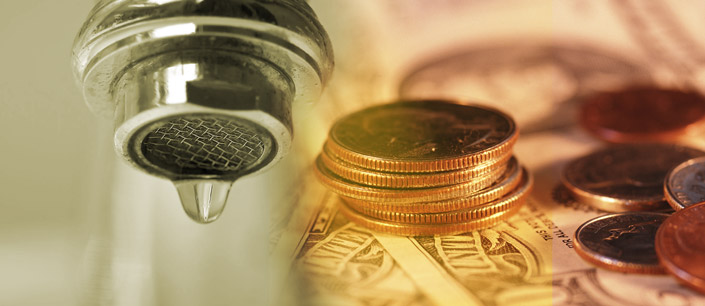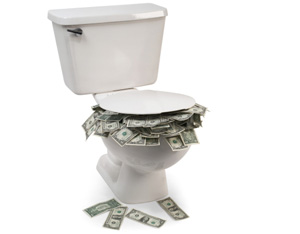Smart Strategies for Preventing a Sky-High Water Bill
 If your water bill is suspiciously high and not consistent with the consumption you make, it’s good time to look for possible leaks. As it turns out, our toilets are the usual culprits. Leaking spots amass to a sky-high water bill without us being aware of it.
If your water bill is suspiciously high and not consistent with the consumption you make, it’s good time to look for possible leaks. As it turns out, our toilets are the usual culprits. Leaking spots amass to a sky-high water bill without us being aware of it.
Certain leakages are intermittent and demand thorough inspection. Then again, others are fairly noticeable. Regardless of the type of plumbing problem you have, we have composed a selection of expert advice on how to deal with this situation.
Leak detection
Water meter is often a valuable instrument in leakage detection. If you’re not sure where the apparatus is located, contact the local water department to get the information. To unscrew the bolts on the meter cover, utilise a proper wrench. Cautiously raise the cover to prevent damage of the connected wires that hold on to the lid. Mind you that the costs of reparation would go to you if wires get broken. Find the meter dial.
Meter pits can sometimes get filled with water. This, however, doesn’t equal a leaking problem. The source of this pool can be an underground spring or waterway. Employ a pump to drain out the water or use a smaller container to bail it.
While you’re doing this, ensure the water fixtures are not turned on at the time. Go to the indicator of flow (triangle) on the meter’s front and look for movements. This low flow sign shows if water is being used, either in the house of via leaks. Check out the toilet’s worn out flappers, but also hot and cold water faucets. A full rotation of the sweep hand is made after passage of 10 gal of water.
Learning how to read the meter
Take an example diagram of a meter, and detect the figures above the gallons inscription. Let’s say the meter reads 133,954. This is the total consumption of water from the moment of its installation.
Since the charge covers only hundreds and thousands, the reader disregards the two last digits having dark background. This means that the reading in our case would be 133.9 or 133.900 gal. Take a look of your newest water bill. Subtract the last reading from your currently showing numbers and that’s the used amount.
Focus on toilets
 Toilet leakage is the most common cause of water waste, and it’s wise to start your search there, advise experienced Hazlet plumbers. Hundreds of gallons can be lost on a daily basis if you don’t detect it and repair it promptly.
Toilet leakage is the most common cause of water waste, and it’s wise to start your search there, advise experienced Hazlet plumbers. Hundreds of gallons can be lost on a daily basis if you don’t detect it and repair it promptly.
Identifying a leak in the toilet apparatus is often cheap and fairly easy, just follow these steps:
- Flush it and pause for around 10 min after
- Uncover the tank. Note the water level in the tank. Is it spilling into the overflow part due to high level? If the answer is yes, we have leakage.
- For extra check-up, place the leak-detecting tablet and wait. If you see tinted water after 30 min, it’s confirmed.
Leakage in the service line
Even though this type of leak is tough to pinpoint, here are some as-good-as-you-can-have indicators that the problem is somewhere in the service line:
- Soaked places in the yard near the house and water meter distance
- Hissing sound of running water issued by your main shut off valve
- Leaking near basement or service line in the crawl cracks
- Water flow has noticeably lost in pressure in all rooms throughout the house and your network
- Water bills are displaying continual increasing trend in the water usage that simply doesn’t have roots in real consumption practices
One for the road: service line leak last resort
Make sure to switch off the major shut-off valve found in your house. Proceed with going out and looking into your water meter. If the mechanism of the water meter is active, the leak is of underground origin and the professional plumbers need to tend to it ASAP.
Having nasty leaks around your premises is double the damage: it’s environmentally unsound and wasteful and the bill gets augmented through the roof. These pieces of advice can help you efficiently detect it and oust it for good.
Category: Home Repair




